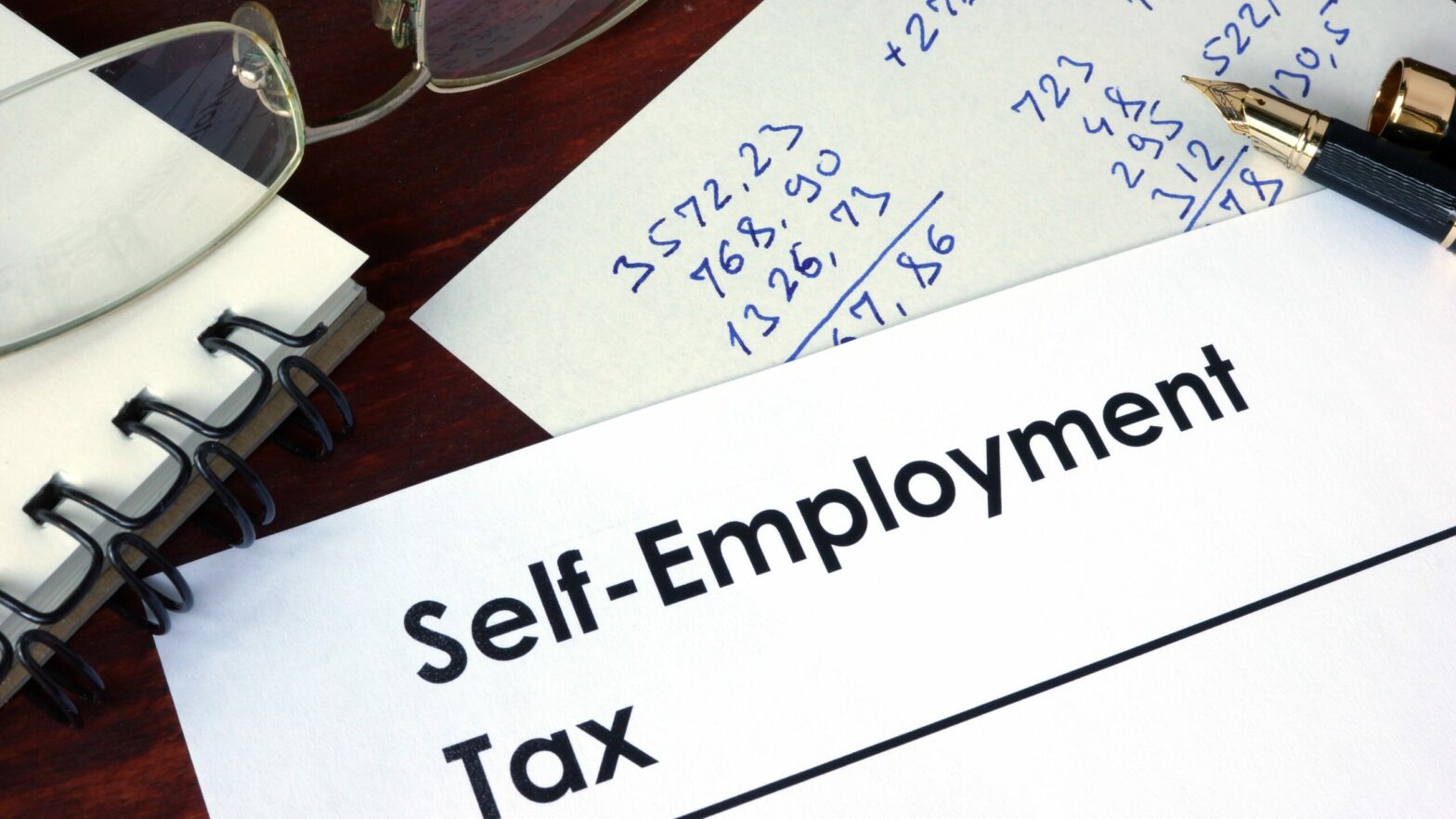What are some examples of sole traders? Here are six jobs that are ideal for anybody who wants to set up on their own offering a personal service, whether it’s fitness training, gardening, hairdressing, private catering, taking photographs or even walking other people’s dogs.
What surprising is how lucrative it can be.
Examples of sole traders – Personal Trainer

What kind of people make the best personal trainers?
Personal trainers are those fit looking people you see in gyms offering personalised exercise and nutrition plans. Becoming a personal trainer can be a great choice if you’re sporty and want to go into business for yourself as a sole trader.
Of course, you must have a passion for fitness, but many people become personal trainers as a second career or a side hustle or they have a supportive partner, who take the pressure on having to earn a high wage.
The people who do best as self-employed personal trainers are those who combine their passion for fitness with business acumen.
However, if you want to make it as a personal trainer, you need to be prepared to work long hours – the working day can start as early as 6am, be responsible for getting your own initial and ongoing qualifications, do your own marketing and manage your client diary.
Do I need a qualification to become a personal trainer?
The answer is yes. The minimum you need is a Level 3 Certificate in Personal Training and its prerequisite, a Level 2 Certificate in Gym Instruction. The good news is that you can be certificated in a number of ways, including full-time and part-time in person. Puregym Personal Training Academy offers an online-only 14-week course offering both certificates at the end.
Once you’ve got your certificate, you can start drumming up clients.
The next stage is a Level 3 certificate, which include sections on nutrition and running your own business.
Ross Mitchell, who trains personal trainers for PT training company Future Fit, says: “I always advise people to get their Level 3 because after that, the sky’s the limit.”
As well as doing this qualification through private training companies, there is the option of doing a ‘Personal Trainer Level 3 Advanced Apprenticeship’ (which is the equivalent to an A level but with useful experience built in). If this is an appealing route, you can search for training providers within the Health and Science apprentice category here.
A Level 4 qualification includes working with people who have medical conditions such as diabetes and means you can be referred to by medical practitioners.
Do I need to be based in a gym?
Not necessarily. Some gym chains such as Puregym encourage freelance personal trainers to rent gym space, as do some independent gyms. Gyms will pay around £30-£35 per class if you’re a freelancer taking a fitness session.
Mitchell says: “My advice would be to work in a gym to start with. Working onsite will help you better understand people,and also help you understand where you want to go in the fitness industry.
“Being a personal trainer isn’t just about fitness. It’s about understanding your client’s personality, their struggles. Not everybody is as enthused about fitness as a newly qualified personal trainer.”
Or you could specialise in outdoor training, offering sessions in local parks. But if you go fully mobile straight away, you won’t have any clients, marketing or visibility. And even if you just set up in the park offering workouts, you may still have to pay your local council.
Other places where you can work as a self-employed personal trainer include:
- Office-based inhouse gyms
- Holiday resorts and hotels
- Cruise ships
Should I specialise in one type of fitness?
The short answer is yes, says Ross Mitchell, who compares having a fitness speciality to being a specialist surgeon as opposed to a general doctor.
Fitness specialisms that are currently popular include:
How much does it cost to become a personal trainer?
The National Register of Personal Trainers says that courses can cost anywhere from around £900 through to £5,000 for an intensive six-week course. To gain a full Level 3 qualification as a personal trainer, you can expect to spend up to around £2,500 as an average course price.
Do I need personal trainer insurance?
Specialist personal trainer business insurance protects you against potentially costly claims from clients if something goes wrong during a session. It also covers you if your equipment is lost, damaged or stolen, if you injure yourself when training or if an employee gets injured while working for you.
It’s so important that proof of specialist insurance is required by most gyms and sports centres before they allow you to work at their facility.
What types of insurance are required by law?
If you train with clients having public liability insurance is essential. This protects your legal liability if a claim is made against you for injury to another person or property damage. For example, you may need to claim if a client injures themselves during a session and holds you responsible or if you accidentally damage a facility you’re training at.
Professional indemnity insurance is also essential if you train clients – this covers you if a client injures themselves as a result of an exercise you’ve instructed and makes a claim against you.
It’s not just injury to your clients you should consider.
If you injure yourself while training, then you need personal accident insurance to cover potential physiotherapy or dental treatment costs. When you take out personal accident insurance, you can also get optional loss of earnings cover for up to 52 weeks in order to support you financially if your injuries mean you’re unable to work.
Another vital requirement of personal trainer insurance is equipment cover. If you transport your equipment to and from a fitness centre or a client’s home, you need equipment cover to protect it against loss, theft and damage. For instance, someone could break into your car and steal your equipment, or it could be damaged by an inexperienced client during a session. If these things happen and you don’t have equipment cover, you would have to pay for repairs or replacements out of your own pocket.
How much will I earn?
The average hourly rate charged by personal trainers is £30-£35, according to Puregym. In your first year, expect to earn as little as £10,000-£16,000; rising to £16,000-£20,000 in year two. fully fledged trainers earning anything between £25,000 and £60,000.
Some trainers who work with elite amateur athletes can charge up to £100 per hour for specialist training. Be warned though, if you’re thinking it would be cool to coach the next Dina Asher-Smith or Katarina Johnson-Thompson, famous athletes may pay you nothing – thinking it’s worth your while being associated with your brand for other lesser clients.
Ross Mitchell of Future Fit says that the attrition rate for people becoming personal trainers is high, mainly because people do not treat it like a business.
“Unfortunately, this is not Field of Dreams. If you build it, they will not come,” he says. “You have to put in a lot of effort.”
However, all it takes is for one of your workouts to go viral on social and you could become the next Joe Wickes.
>See also: What is a sole trader? A small business guide
Small Business Pro, our all-in-one solution, can save you time and money as well as offering peer support and the chance to win a monthly £2,500 grant. It will also help with the heavy lifting of managing customers, taking payments, insurance, finance and HR, plus you’ll get a host of personal wellbeing benefits.
You can find out more about Small Business Pro here.
Examples of sole traders – Gardener

We know that anything outdoors is healthy. And, during the summer months, what could be better to be outside all day working in nature? And, for those of you who enjoy gardening, becoming a gardener is relatively low cost.
Do I need a qualification to become a gardener?
Mark Soanes of Urban Paradise spent 15 years in media working as an operational manager for companies including Virgin and Universal before being made redundant in 2016.
A keen amateur gardener, he decided to become a garden designer and landscape manager, doing a one-and-a-half year degree in garden design at the British Academy of Garden Design.
Soanes recommends taking a course before starting out as a self-employed gardener, such as those offered by the Royal Horticultural Society (RHS).
Soanes said: “A lot of people undervalue gardeners because there’s a lot to learn. It’s a lifetime learning process. You’re constantly learning by taking as many courses as you can, but everybody has to start somewhere.”
You can always join a gardening firm
Another route to becoming a self-employed gardener would be to join a bigger gardening firm by becoming a junior gardener. That way, you don’t have the outlay of setting up on your own and you should be partnered with another, experienced gardener who you can watch and learn from.
How much does it cost to set up as a gardener?
According to Fantastic Gardeners, would-be self-employed gardeners should budget for anything between £7,000 and £10,000 in set-up costs, including buying a van to transport tools, buying proper equipment and professional indemnity insurance.
What are my setting up costs?
- Tools – lawnmower, strimmer and hedge trimmer are essentials, as well as a spade, fork, shears, secateurs, loppers, lawnmower (best to have a battery-powered one), ladder, leaf blower, hedge trimmer, wheelbarrow, safety glasses, hosepipe, spray applicator, etc. Aim to spend at least £1,500 on gardening equipment.
- Van – for transporting tools and equipment
- Licences – you need a licence to operate a chainsaw, use pesticides or carry waste
- Website build and maintenance
- Uniform
- Bookkeeping software
- Professional indemnity insurance – costs as little as £70 a year
Where do I find clients?
By registering with the Gardeners Guild, you can list the services you offer. Full membership is currently just £45 a year (plus £10 initial registration fee). However, you must have at least one regulated horticultural qualification at Level 2 or above before being accepted for membership.
How much will I earn?
Professional gardeners work in blocks of three to four hours – otherwise it’s just not cost-effective factoring in travelling to and from jobs.
Gardeners can charge between £20-£50 an hour or a minimum £150 per day. This equates to anything between £15,000 and £70,000 a year, depending on how sophisticated a service you offer.
And, contrary to popular opinion, gardening and landscaping is a year-round job – there’s always something to be getting on with.
>See also: Can I switch a limited company to sole trader?
Examples of sole traders – Hairdresser

One of the great things about being self-employed as a hairdresser is that you can grow into the role (sorry!). You can start out as a junior stylist and then work your way up, either working for a big city-centre salon or opening your own premises.
Or you can go completely mobile, visiting clients at home, while renting a chair in a salon for clients to visit you.
What qualifications do I need to be a hairdresser?
You can study hairdressing at college (such as a Level 2 or Level 3 Diploma or a T-level in Hairdressing, Barbering and Beauty Therapy – England only, from September 2023).
Or you could do an apprenticeship in a salon with a view to becoming a trainee hairdresser in a salon and learn on the job. Your employer will provide you with a certificate after you complete your apprenticeship. There are different levels of apprenticeship that will qualify you for different levels of National Vocational Qualification (NVQ) diplomas.
- Intermediate hairdressing apprenticeship (haircutting, shampooing, basic colouring, customer service) – qualifies for NVQ Level 2
- Advanced Apprenticeship (creative hairstyling, advanced colour, salon management) – qualifies for NVQ Level 3
Renting a chair
One of the benefits of being a self-employed hairdresser is that you can either visit clients in their homes or have them come to your home.
Another option is what’s called “renting a chair” where you rent a chair in a salon, either paying the owner a fixed daily/weekly fee or a percentage of takings when you are there. The standard percentage is around 40 per cent.
What equipment will I need?
- Scissors, combs, electric clippers
- Hair straighteners/curlers/wavers
- Hairdryer
- Protective floor covering
- Protective cape for client to wear
- Towels
- Sectioning clips
- Hair products (shampoos, conditioners/styling products/colours)
What kind of insurance will I need to become a hairdresser?
What kind of insurance do I need?
Professional Beauty Direct offers self-employed hairdressing insurance starting at £42.50 a year. The policy is designed for self-employed mobile hair stylists and hairdressers, who either work from their home or visit clients, or rent a chair in a salon. The policy offers liability cover of up to £6m. You can add equipment cover as an additional cost.
The insurance package, which offers liability cover of up to £6m, includes:
Public liability insurance covers any injuries or accidents that may occur in your home or at your work premises, such as a customer stabbing themselves with your scissors.
Product liability insurance covers the products you sell to clients following a treatment, e.g. the products you used on them or aftercare products. This includes any allergic reaction to the product.
Treatment liability insurance covers claims made against you by a client if they experience illness or injury as a result of you providing a treatment
How much will I earn?
The average salary for a hairdresser is between £14,000 per year for a junior hairdresser and £30,000 per annum for a highly experienced hairdresser.
Examples of sole traders – Private Chef

What does a private chef do?
If you’ve ever watched MasterChef on TV, you will have noticed that many of its contestants go on to set up their own businesses as private chefs. And many of the MasterChef professionals are already working as a private chef.
Setting up as a private chef could mean you cater for one-off dinner parties or you’re called in to cater for glamorous country house weekends or even working for the rich and famous on yachts as an onboard cook.
However, be prepared for hard work: private chefs can work up to six days a week, covering everything from breakfast through to dinner, and then there’s the wiping down and washing up, which means up to 12-hour days.
Broadly speaking a private chef:
- Plans menus
- Shops for ingredients
- Prepares, cooks and often serves meals
- Clears away and cleans the kitchen
Do I need a qualification to become a private chef?
Many chefs go to a cookery school such as Ballymaloe, Le Cordon Bleu or Leiths to formally train and then start as a cook to gain experience.
Or they may start in a kitchen restaurant working their way up to sous chef before setting up on their own.
But there’s nothing to stop you from just going into business for yourself, if you’re passionate about your own food.
Gary Maclean, MasterChef winner and the national chef of Scotland, says: “A lot of people fall into it. The biggest draw is the freedom to develop your own food and do what you want. The chefs who go into it want to do their own thing without having a head chef over them. A lot of private chefs are enthusiasts who have never worked in a professional kitchen. My advice would be to give it a go but just start small.”
What skills do I need to be a private chef?
Maclean says that in addition to being able to cook, private chefs need to organised and good at planning a dinner party from start-to-finish.
“You need to be able to think on your feet,” he says, “as you never know what’s going to be thrown at you. It’s not as if you can reach for the store cupboard or the chiller, as you can in a professional kitchen.”
What equipment do I need as a private chef?
Maclean advises investing in your own kitchen equipment, as having top-quality tools really helps when it comes to producing and delivering a first-class dinner party. But the most important thing is to be passionate about what you’re doing, whether or not you’re already working in a professional kitchen and are offering dinner parties as a side hustle.
How much will I earn?
A live-out private chef can earn between £30,000 and £70,000 per annum. The average salary for a private chef is about £38,732 per year.
Examples of sole traders – Photographer

What does a freelance photographer do?
In a way, we’ve all become photographers. All of us snap away on our iPhones to feed our Instagram accounts. If you’ve got a good eye, you might want to take things further and become a self-employed photographer.
There are plenty of niches you can specialise in as a freelance photographer:
- Event photography
- Fashion photography
- Food photography
- PR photography
- Product shots
- Property photography
- Social media images
- Sports photojournalism
- Stock photography
- Travel photography
- Wedding photography
Do I need qualifications to become a freelance photographer?
You’re not required to have formal qualifications, but certificates can reassure clients. In addition to studying photography at art school or university, organisations including the British Academy of Photography, the Royal Photographic Society and the British Institute of Professional Photographers all offer courses.
What equipment do I need to become a freelance photographer?
- Camera – recommended models include Canon EOS 200D, Nikon Z6, and the Sony Cyber-shot RX100 Mark IV
- Lenses – fisheye, wide zoom, macro, telephoto, etc.
- Lighting – lamps, diffusers, reflectors
- Other equipment – tripod, memory cards, flash triggers, strobes
- Editing software – Adobe Photoshop and Adobe LightRoom are industry go-tos
- Computer – recommended models include , the Acer Predator Helios 500, 16″ MacBook Pro and the Dell XPS 15
How much can I earn as a freelance photographer?
According to Glassdoor, the average earnings of a freelance photographer is £31,336. If you’re starting out, the average hourly rate is £28.44 according to Indeed.
Examples of sole traders – Dog Walker

A total of 3.2 million households in the UK have acquired a pet in roughly the first year of the pandemic, according to the Pet Food Manufacturers’ Association.
According to the PFMA, there are 12 million dogs in Britain and all of them need walking, which was fine when people were stuck working from home and welcomed the break to have a trot round the local park, but not so easy now that people have gone back to the office – even if it’s for three days a week.
Enter the need for a dog walker.
However, it’s just not a question of if you like dogs, but also if you are physically fit enough to cope with long, arduous walks with, say, a Labrador Retriever in driving rain and mud.
If you’re fit and like jogging, some dogwalkers call themselves “dog runners” and specialise in high-energy breeds who like long runs.
On the other hand, even if you’re elderly or have a disability, you could still become a dog walker by making clear you can only handle toy breeds or elderly dogs.
If you’d like to get more experience with dogs, you might consider volunteering at your local kennels or rescue centre first. It is important to understand how to actually walk dogs, putting big dogs in the middle of the pack and small dogs on the outside, for example, so they won’t get trampled.
Marilyn Lewis, support manager at NarpsUK, says: “The most important thing is to have experience. Get in touch with a local rescue centre and have hands-on experience of putting on a collar and lead and taking dogs for walks.”
What are the regulations around dog walking?
There aren’t many specific rules and regulations relating to dog walking businesses, however, professional dog walkers’ association NarpsUK advises that dog walkers should always meet the owner before walking a dog for the first time, keep records of all dogs and payments, and always protect customers’ information.
- It is advisable to walk no more than four dogs at a time
- Dogs must wear a collar that has the owner’s name and address on it
- Dogs must kept on a lead at all times on roads and pavements
- You could be fined up to £1,000 if you do not clean up dog faeces
- You must be in control of the dog at all times. It is against the law for a dog to be “dangerously out of control” in a public place. The Government has information on controlling your dog in public here
- It’s also a good idea to keep water and a first aid kit on you at all times in case one of the dogs in your care gets hurt
Do I need a qualification to become a dog walker?
The answer is ‘no you don’t’, but… in order to best compete for work, a recognised qualification will help you stand out and provide reassurance to potential clients. The owner of a precious pet will be far more likely to hire you unknown if you can point to some professional certification.
City & Guilds offers professional qualifications with a Level 2 Certificate of Technical Competence in Dog Walking. More info here.
iPET Network offers a Level 3 Award in Dog Walking and Pet Sitting for Professionals, which has been approved by Ofqual.
NarpsUK, the professional association for pet sitters and dog walkers which has a thousand members, offers a Pet Sitting and Dog Walking business course.
Marilyn Lewis, support manager at NarpsUK, says: “The course we offer makes it much easier for people who want to set up a professional dog walking business, such as providing readymade risk assessment forms needed by local councils or disclaimers for, say, dog owners who are happy for their hounds to be off the leash.”
Do I need insurance to become a dog walker?
Yes, this is mandatory to protect you and your clients. You must have public liability insurance in case the dog you are walking causes an accident or injures other dogs or people. A good add-on would be dog walking insurance that covers you if the dog has an accident itself or becomes sick while you are in charge.
If you use your car or home as part of your new dog walking business, you must tell your insurance company and an additional premium may be payable.
And, if your dog walking business takes off and you need to take on extra people help pooches pound the streets, then you should also take out Employer’s Liability Insurance.
You’ll need a criminal record check
If you’re holding a dog owner’s keys and going into their house, you’ll need a Criminal Record Check. For jobs in England and Wales you can request a basic Disclosure and Barring Service check for £23.
There’s a different application process if your business is in Northern Ireland or Scotland. You’ll need to have lived at your current address for more than a year to apply online with Disclosure Scotland for a Basic Disclosure, which costs £25. While for AccessNI, a basic check costs £18.
If you’ve lived at your address for under a year, you can apply for a Criminal Record Check through NarpsUK for £65.
How much does it cost to set up a dog walking business?
One of the great things about setting up a dog-walking business is that there are no start-up costs. You can bootstrap (or should that be “leadstrap”) your business with just one dog. In time, as you take more dogs out, you could get a van and buy crates, a ramp for dogs to climb into the van, signwriting on the side of the van, etc.
To begin with, you can advertise your dog-walking business for free by dropping off leaflets at local dog-grooming parlours, vets and with local dog trainers.
- You’ll need to buy extra harnesses and leads and toys to keep dogs amused
- Setting up a website advertising your new business makes you look professional
- You need to allow £150 for insurance and criminal record checks
- Spend £250 on flyers and business cards and a local newspaper advert
How much will I earn?
The amount you can earn as a dog walker is based on your location. If you are in a well-heeled neighbourhood such as the London suburb of Richmond, dog walkers charge £25 per dog for each walk. Setting up a dog-walking business is more likely to be successful in a town or city.
The average UK hourly rate for dog-walking is £10-£25 for walks that last between 30 minutes and an hour. The median hourly rate is £15 per dog walk and NarpsUK members typically walk around 12 dogs per day. In 2015 Direct Line Pet Insurance published a survey suggested that a reasonably busy dog walker could earn £26,000 a year.
Another element can be home boarding, where owners leave their dogs in someone else’s home when they go abroad as opposed to kennels. You can charge anything between £25 and £30 per dog per night for overnight stays.
More on sole traders
Best business bank accounts for sole traders – A look at some of the best accounts on the market targeted specifically at the sole trader.





